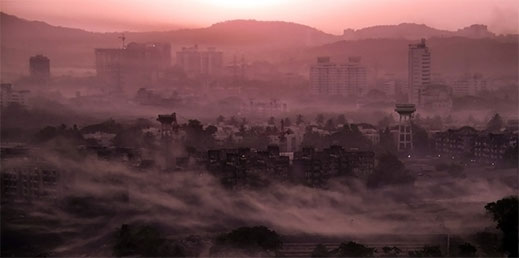As Paris Talks Near, Emissions Pledges Fall Short
With diplomats and policymakers set to gather in Paris for the latest round of international negotiations on climate change on November 30, there is something new in the air: optimism. For the first time since the adoption of the Kyoto Protocol in 1997, many analysts and stakeholders believe there’s a real chance of achieving a specific agreement on reducing the greenhouse-gas emissions that are already causing dramatic changes to the world’s climate.

That confidence springs, in part, from the voluntary commitments already made by countries that will participate in the summit, the 21st meeting of nations since the adoption of the U.N. Framework on Climate Change in 1994. The largest climate summit to date, the Paris conference, is expected to produce an agreement that includes concrete limits on countries’ emissions of greenhouse gases—a milestone, even if it’s not in the form of a legally binding treaty.
With the notable exception of India, every major country in the world has announced targets for reductions of carbon dioxide emissions. Known as intended nationally determined contributions, or INDCs, these pledges come from 161 countries that together account for 93 percent of global emissions.
Unfortunately, those pledges are insufficient to limit the rise in global temperatures to 2 °C—the threshold necessary to avert catastrophic economic and social consequences, according to the U.N.’s Intergovernmental Panel on Climate Change. The national contributions “bend the emissions curve down to a temperature rise of approximately 3 °C” by the end of the century, said U.N. secretary-general Ban Ki-moon at a meeting last week of the Group of 20, an international forum for the world’s major economies. “This is significant progress. But it is not enough.”
According to the Climate Scoreboard, produced by Climate Interactive, a nonprofit, nonpartisan research group in Washington, D.C., the national commitments should limit warming by 2100 to around 3.5 °C, or halfway from the business-as-usual scenario (4 to 5 °C) to the 2 °C threshold.
“One can envision an agreement in Paris that would get us at least another halfway there, something that, with suitable progress at subsequent conferences, could indeed get us to 2 °C maximum warming,” says climate scientist Michael Mann, the director of the Earth Systems Science Center at Penn State University.
That’s the optimistic view. Another problem is that the national pledges are just that: pledges, with no binding treaty or penalties to back them up. This flaw was highlighted when the U.S. secretary of state, John Kerry, said in an interview last week with the Financial Times that any agreement in Paris is “definitively not going to be a treaty” and would not include legally binding reduction targets. European leaders, who have called for enforceable reduction plans in the face of opposition from developing nations and from the U.S., reacted with alarm to Kerry’s comments.
Nevertheless, the willingness of countries like China, the United States, and Russia to commit to emissions restrictions provides a new opportunity to move beyond the arguments that have stifled progress on climate change to date. “On the plus side, people are talking about specific numbers, and that hasn’t been the case in the past,” says Martin Weitzman, a professor of economics at Harvard who studies the environmental and economic consequences of climate change. “Nations are about to quote-unquote commit to greenhouse-gas emission reduction targets. That’s a first step on the way to anything.”
Keep Reading
Most Popular
Large language models can do jaw-dropping things. But nobody knows exactly why.
And that's a problem. Figuring it out is one of the biggest scientific puzzles of our time and a crucial step towards controlling more powerful future models.
The problem with plug-in hybrids? Their drivers.
Plug-in hybrids are often sold as a transition to EVs, but new data from Europe shows we’re still underestimating the emissions they produce.
How scientists traced a mysterious covid case back to six toilets
When wastewater surveillance turns into a hunt for a single infected individual, the ethics get tricky.
Google DeepMind’s new generative model makes Super Mario–like games from scratch
Genie learns how to control games by watching hours and hours of video. It could help train next-gen robots too.
Stay connected
Get the latest updates from
MIT Technology Review
Discover special offers, top stories, upcoming events, and more.